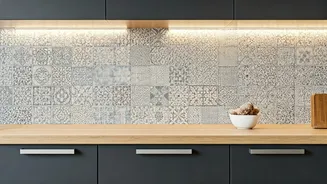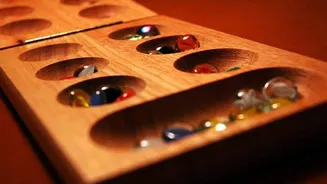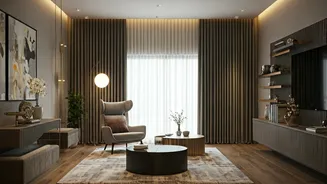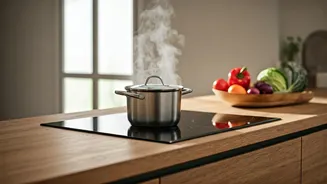Modern Tile Designs
Modern kitchens often embrace sleek, minimalist aesthetics. Consider large-format tiles with a smooth, polished finish for a contemporary feel. These can
minimize grout lines, creating a seamless and expansive look. Neutral colors like white, gray, or black are popular choices, offering a clean backdrop. Geometric tile patterns and textured tiles can introduce visual interest without disrupting the minimalist theme. Metallic accents, such as copper or stainless steel tiles, add a touch of sophistication, creating a striking focal point, and complementing modern appliances. Subway tiles, arranged in a modern layout like a herringbone pattern, remain a stylish option, adding subtle texture and visual appeal to the kitchen design.
Classic Tile Styles
Classic kitchen designs often evoke a sense of warmth and timeless elegance. Traditional options include ceramic or porcelain tiles with intricate patterns. These can feature floral motifs, arabesques, or other decorative elements. Earthy tones such as beige, cream, and soft pastels are common choices that create a welcoming atmosphere. Consider using patterned tiles as a backsplash to add a focal point. Alternatively, traditional subway tiles with a beveled edge can provide a timeless look. For a touch of luxury, consider natural stone tiles like marble or granite. These materials add a sense of sophistication and enduring appeal to the kitchen space. Pairing classic tiles with traditional cabinetry and hardware enhances the overall aesthetic, creating a harmonious and enduring design.
Patterned Tile Ideas
Patterned tiles offer an effective way to inject personality and visual flair into a kitchen. There are numerous pattern styles to select from. Geometric tiles, with their repeating shapes, are a great choice for modern and eclectic kitchens. They are available in various colours and arrangements, creating bold and playful designs. Moroccan or cement tiles bring exotic patterns and vivid colours, adding a touch of global influence. These can be used as a backsplash or feature wall, instantly transforming the space. Subway tiles, arranged in herringbone, chevron, or basketweave patterns, are other stylish options. These add texture and depth to the wall design. Mixing different patterned tiles can create a unique, custom look; ensure the colours and styles harmonize to maintain a cohesive design.
Material Selection Guide
The material you select for your kitchen wall tiles plays a key role in the aesthetic and functionality of your kitchen. Ceramic tiles are a popular and affordable option, offering a wide array of colours, patterns, and finishes. They are durable, easy to clean, and resistant to water and stains. Porcelain tiles are more robust and less porous than ceramic tiles, making them perfect for high-traffic areas. They're also resistant to moisture and staining. Natural stone tiles, like marble, granite, or travertine, offer luxurious, unique, and timeless beauty. These materials are elegant and durable. However, they need regular sealing and maintenance. Glass tiles can add a reflective and sophisticated element. These reflect light, making a kitchen appear brighter and more spacious. They are, however, more prone to scratches. Metal tiles add a modern, industrial touch to the kitchen. These are available in various metallic finishes and patterns.
Backsplash Designs Explained
The backsplash area is a perfect space to express your creativity. Consider how to integrate your backsplash into your kitchen layout. A simple and classic approach is using subway tiles. This can add a touch of timeless elegance. For a more adventurous look, experiment with mosaic tiles. These come in various materials, colours, and patterns, enabling a custom and personalized feel. A bold choice is to use patterned tiles as a focal point. Use these to add visual interest and create a striking backdrop. A seamless look can be achieved by extending the countertop material to the backsplash. This creates a cohesive and integrated design. The backsplash area offers the chance to experiment with textures, colors, and patterns, expressing personal style.
Tile Colour Combinations
Selecting the right colour combinations for your kitchen wall tiles is essential for setting the mood and atmosphere. A safe option is to use neutral colours, such as white, gray, or beige. These create a clean, classic, and versatile base. They complement various design styles and allow for easy integration of accent colours. Consider using contrasting colours to create a bold and dynamic design. For instance, pairing dark tiles with light cabinets or vice versa can create visual interest. Using complementary colours, which are opposite each other on the colour wheel, is a great option. Using colours like blue and orange, or green and red, adds harmony. If you wish to achieve an airy and spacious feel, opt for light, bright colours. If you prefer to make a cosy and warm feel, darker shades or earthy tones are great choices.
Grout Selection Tips
The grout colour you choose impacts the overall look of your tile design. The most commonly selected options include matching grout to tiles. This helps to create a seamless, unified aesthetic. It also minimizes the appearance of grout lines. Selecting a contrasting grout colour can help emphasize the tile pattern. This can be great if you wish to draw attention to intricate designs. Light-coloured grout, such as white or light gray, is ideal for light-coloured tiles, while dark grout, such as black or charcoal, is great for dark-coloured tiles. This provides definition to the individual tiles. Consider the material and stain-resistance of the grout you choose. Epoxy grout is water and stain-resistant. Cement-based grout needs regular sealing to prevent staining and damage. Choose the best grout to protect and extend the life of your kitchen tile design.
Cost Considerations
Considering your budget is important for the tile selection process. Ceramic tiles are an affordable option, perfect for anyone who wishes to renovate on a budget. These can still create attractive kitchen designs. Porcelain tiles are generally more expensive but offer increased durability and longevity. Natural stone tiles, like marble or granite, are at the higher end. The price is dependent on the type of stone and the installation complexity. Factor in not just the tile cost, but also other installation expenses. This can include the cost of labour, grout, and any necessary tools or materials. Determine the area of your kitchen that you want to tile. Calculate the quantity of tiles needed to estimate the overall cost. Research prices from various suppliers to find competitive options. Balance the cost with your desired aesthetic. This may mean making compromises to stay within your set budget.
Installation and Maintenance
Proper installation is vital for ensuring the longevity and appearance of your tile. If you're not an expert, hire a professional tile installer. This can help to ensure precision and quality. Ensure the surface is prepared correctly. This involves cleaning, leveling, and sealing before tiling. Follow the manufacturer's instructions for the adhesive and grout. This guarantees proper adhesion and water resistance. Regular maintenance can prolong the life of your kitchen tiles. Sweep or vacuum the tiles regularly to remove dirt and debris. Clean the tiles with a pH-neutral cleaner. Avoid abrasive cleaners or harsh chemicals, which can damage the tile surface. Seal the grout every year or as required to prevent staining and water damage. Address any cracks or damaged tiles quickly. Replacing them prevents further damage and keeps your kitchen looking its best.












